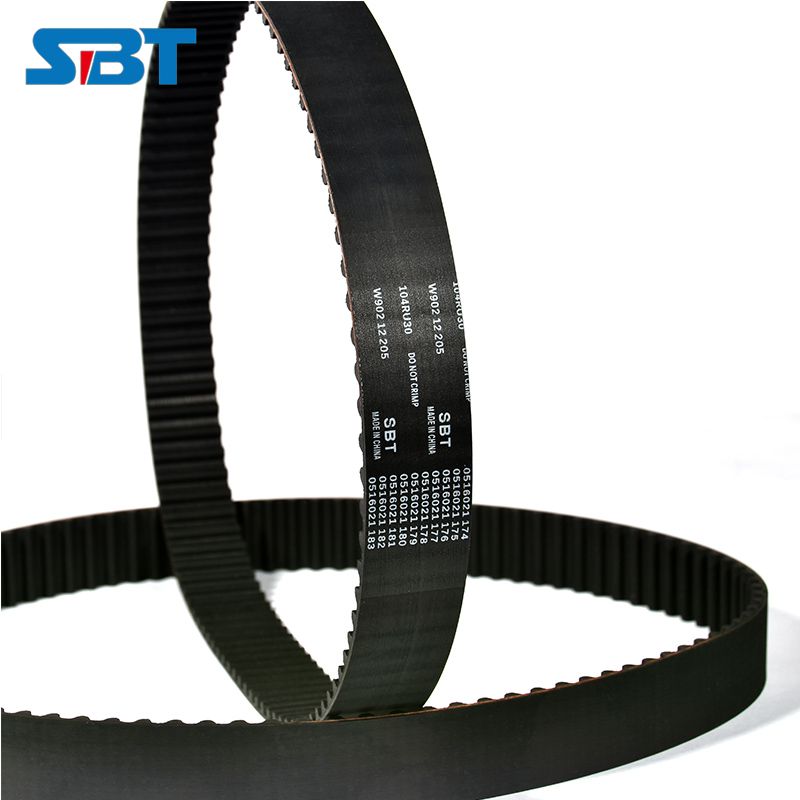What are the signs before the timing belt of the car is about to break?
In the complex mechanical structure of the car, the timing belt plays a crucial role, acting like the "heartbeat metronome" of the engine, precisely controlling the coordination of the individual components. However, this seemingly inconspicuous component, once there is a problem, may bring a lot of trouble and expensive maintenance costs to the car owner.
The function and principle of the timing belt
Timing belts, as the name suggests, are belts that are used to ensure that the internal components of the engine run on time and accurately. It connects the crankshaft to the camshaft to ensure that the up and down movement of the piston is perfectly matched to the timing of the opening and closing of the valve. Imagine if the engine were a sophisticated stage play, then the timing belt would be the director behind the scenes, directing each actor (i.e., the engine parts) to appear at the right moment to deliver a smooth power delivery.
In principle, the timing belt is engaged with the gear on the crankshaft and camshaft through the tooth shape on its surface, and drives the camshaft to rotate with the rotation of the crankshaft, so as to realize the synchronization of the valve switch and the piston movement. This process requires extreme precision, and even the slightest deviation can affect engine performance or even cause damage.
Serious consequences of a broken timing belt
Once the timing belt breaks, the consequences are unimaginable. First of all, the most immediate effect is that the engine will not work properly. Due to the interruption of the connection between the crankshaft and the camshaft, the opening and closing of the valve will no longer be synchronized with the movement of the piston, which may lead to a collision between the piston and the valve, and this "metal kiss" will not only damage the valve and piston, but even lead to the rupture of the engine block in serious cases, and the repair cost will be high.
Secondly, a auto timing belt break can also cause other chain reactions inside the engine. For example, due to the loss of timing control, fuel supply and ignition timing will be affected, which will lead to a series of problems such as engine starting difficulties, insufficient power, and increased fuel consumption. What's worse is that if it suddenly breaks during driving, the vehicle may lose power instantly, posing a great threat to driving safety.

Signs before the timing belt breaks
Although the break of the timing belt often seems sudden, in reality, some warning signs are usually given before it "strikes". Learning to recognize these signs is essential to prevent failures and reduce losses.
Abnormal noise: When the timing belt begins to age or wear, there may be a "squeak" or "rattle" abnormal sound during operation, especially when the car is started or accelerated sharply. This sound is a manifestation of the increased friction between the belt and the gear, and should not be ignored.
Idle shake and easy stalling: If the engine shakes significantly at idle, or if it stalls frequently for no reason, it can also be a sign of timing belt problems. This is because belt slack or wear causes inaccurate timing, affecting the smooth operation of the engine.
Reduced power and increased fuel consumption: As timing belt wear increases, the engine becomes less efficient, less powerful than before, and fuel consumption increases. This is because the interworking of the various components inside the engine is disrupted and it does not work efficiently.
Dashboard warning lights: Modern cars are usually equipped with electronic monitoring systems, and when there is a failure of the timing belt or related systems, the corresponding warning lights on the dashboard may illuminate, reminding the owner to check in time.
Timing belt replacement cycles
In order to avoid the trouble caused by the sudden breakage of the timing belt, it is necessary to replace it regularly according to the manufacturer's recommended replacement cycle. Generally speaking, it is recommended to replace the timing belt between 60,000 and 100,000 kilometers on most models, but you need to refer to the vehicle's instruction manual. It is worth noting that even if the vehicle does not reach the recommended replacement mileage, if it is often driven in harsh environments (such as high temperature, dusty, humid, etc.), it should be replaced in advance.
Timing belt vs. timing chain
When it comes to timing systems, we have to mention another design - timing chains. Different from timing belts, timing chains are made of metal, which has higher durability and strength, so they are widely used in some high-end models, and even claim to be "maintenance-free for life". So, why do low-end cars use belts and high-end cars prefer chains?
The main reason is the balance between cost and performance. Although timing belts need to be replaced regularly, their manufacturing costs are relatively low, and the replacement process is relatively simple, making them suitable for mass vehicles. Although the timing chain eliminates the trouble of replacement, it is more expensive to manufacture and has stricter requirements for the layout and design of the engine, so it is mostly seen in high-end models. In addition, although the chain is durable, it can also stretch or wear after prolonged use, affecting the timing accuracy, although this is relatively rare.
To sum up, whether it is a timing belt or a timing chain, it has its unique advantages and applicable scenarios. It is important for car owners to know the type of timing system in their vehicle and to maintain and replace it according to the manufacturer's recommendations to ensure that the engine is always in top condition.
Prevention is always better than remediation, and knowing the signs before the automobile timing belt breaks can not only help you save a lot of money on repairs, but also protect your driving safety.

